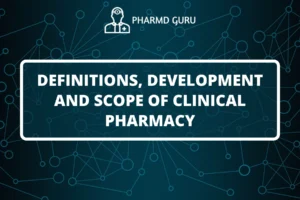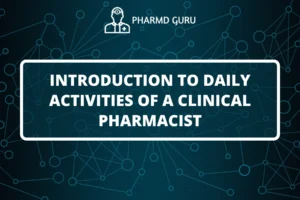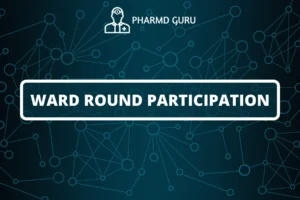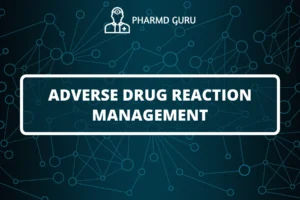Adverse drug reactions (ADRs) are undesirable and potentially harmful effects that occur as a result of medication use. Reporting, evaluating, monitoring, preventing, and managing ADRs are essential components of pharmacovigilance to ensure patient safety and optimize medication therapy. This article provides an overview of these aspects related to ADRs.
SCROLL DOWN TO THE BOTTOM OF THE PAGE FOR ACTUAL NOTES
TABLE OF CONTENTS:
- Introduction
- Reporting of Adverse Drug Reactions
- Evaluation of Adverse Drug Reactions
- Monitoring of Adverse Drug Reactions
- Preventing Adverse Drug Reactions
- Management of Adverse Drug Reactions
1. Introduction
ADRs can range from mild and tolerable side effects to severe and life-threatening reactions. It is crucial to establish robust systems and processes for reporting, evaluating, monitoring, preventing, and managing ADRs to enhance medication safety and improve patient outcomes.
2. Reporting of Adverse Drug Reactions
Reporting ADRs is vital for capturing valuable information about medication safety. Healthcare professionals, patients, and consumers can contribute to ADR reporting. Reporting can be done through national pharmacovigilance programs, online reporting systems, or directly to regulatory authorities. Timely and accurate reporting helps identify new or rare ADRs and contributes to the overall understanding of medication safety profiles.
3. Evaluation of Adverse Drug Reactions
The evaluation of ADRs involves assessing the causal relationship between the medication and the observed adverse event. Various methods and algorithms, such as the Naranjo algorithm and the World Health Organization-Uppsala Monitoring Centre system, are used to determine the likelihood of the drug causing the ADR. Healthcare professionals review the reported ADRs and analyze available evidence to understand the nature, severity, and potential risks associated with the ADR.
4. Monitoring of Adverse Drug Reactions
Monitoring ADRs involves ongoing surveillance of medication safety. Pharmacovigilance systems collect, analyze, and interpret data on ADRs to identify patterns, trends, and signals of potential safety concerns. Healthcare professionals and regulatory authorities collaborate to continuously monitor the safety of medications and take appropriate actions to minimize risks associated with ADRs.
5. Preventing Adverse Drug Reactions
Preventing ADRs is a key objective of medication safety programs. Several strategies can help reduce the occurrence of ADRs, including:
- Patient Education: Providing patients with information about their medications, potential side effects, and how to recognize and report ADRs.
- Medication Review: Conducting comprehensive medication reviews to identify potential drug-drug interactions, contraindications, or inappropriate medication use.
- Adherence Monitoring: Ensuring patients understand and adhere to their medication regimens to minimize the risks of ADRs.
- Pharmaceutical Interventions: Implementing appropriate prescribing practices, dose adjustments, and therapeutic monitoring to optimize medication therapy.
- Risk Communication: Disseminating relevant information about ADRs, safety alerts, and precautions to healthcare professionals, patients, and the public.
6. Management of Adverse Drug Reactions
Managing ADRs involves various approaches, depending on the nature and severity of the reaction. Actions may include:
- Discontinuation or Modification of Medication: Stopping or adjusting the dose or frequency of the medication to mitigate the ADR.
- Supportive Care: Providing symptomatic relief and supportive treatments to manage the adverse effects.
- Switching to Alternative Medications: Substituting the causative medication with an alternative that has a lower risk of causing ADRs.
- Collaborative Care: Involving multidisciplinary healthcare teams to manage complex ADRs and ensure comprehensive patient care.
ACTUAL NOTES




